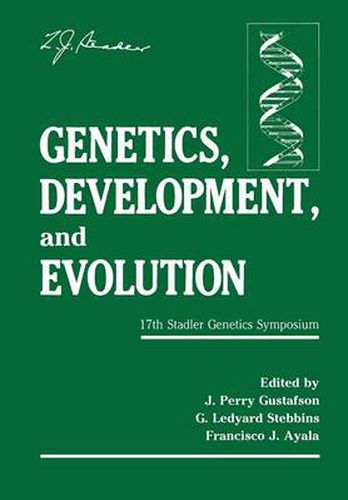Readings Newsletter
Become a Readings Member to make your shopping experience even easier.
Sign in or sign up for free!
You’re not far away from qualifying for FREE standard shipping within Australia
You’ve qualified for FREE standard shipping within Australia
The cart is loading…






This title is printed to order. This book may have been self-published. If so, we cannot guarantee the quality of the content. In the main most books will have gone through the editing process however some may not. We therefore suggest that you be aware of this before ordering this book. If in doubt check either the author or publisher’s details as we are unable to accept any returns unless they are faulty. Please contact us if you have any questions.
One outstanding question in biology is the problem of devel opment: how the genetic instructions encoded in the DNA become expressed in the morphological, physiological, and behavioral features of multicellular organisms, through an ordered sequence of events that extend from the first cell division of the zygote to the adult stage and eventual death. The problem is how a one dimensional array of instructions is transformed into a four dimensional entity, the organism that exists in space and time. Understanding this transformation is, nevertheless, necessary for mastering the process of evolution. One hundred and twenty-five years after The Origin of Species, we have gained some understanding of evolution at the genetic level. Genetic information is stored in the linear sequence of nucleotides in the DNA. Gene mutations, chromosomal reorganiza tions, and a host of related processes introduce variation in the sequence and the amount of DNA. The fate of these variations is determined by interactions within the genome and with the outside environment that are largely understood. We have recently gained a glimpse of how the genome of eukaryotes is organized and will learn much more about it in the future, now that we have the research tools for it.
$9.00 standard shipping within Australia
FREE standard shipping within Australia for orders over $100.00
Express & International shipping calculated at checkout
This title is printed to order. This book may have been self-published. If so, we cannot guarantee the quality of the content. In the main most books will have gone through the editing process however some may not. We therefore suggest that you be aware of this before ordering this book. If in doubt check either the author or publisher’s details as we are unable to accept any returns unless they are faulty. Please contact us if you have any questions.
One outstanding question in biology is the problem of devel opment: how the genetic instructions encoded in the DNA become expressed in the morphological, physiological, and behavioral features of multicellular organisms, through an ordered sequence of events that extend from the first cell division of the zygote to the adult stage and eventual death. The problem is how a one dimensional array of instructions is transformed into a four dimensional entity, the organism that exists in space and time. Understanding this transformation is, nevertheless, necessary for mastering the process of evolution. One hundred and twenty-five years after The Origin of Species, we have gained some understanding of evolution at the genetic level. Genetic information is stored in the linear sequence of nucleotides in the DNA. Gene mutations, chromosomal reorganiza tions, and a host of related processes introduce variation in the sequence and the amount of DNA. The fate of these variations is determined by interactions within the genome and with the outside environment that are largely understood. We have recently gained a glimpse of how the genome of eukaryotes is organized and will learn much more about it in the future, now that we have the research tools for it.